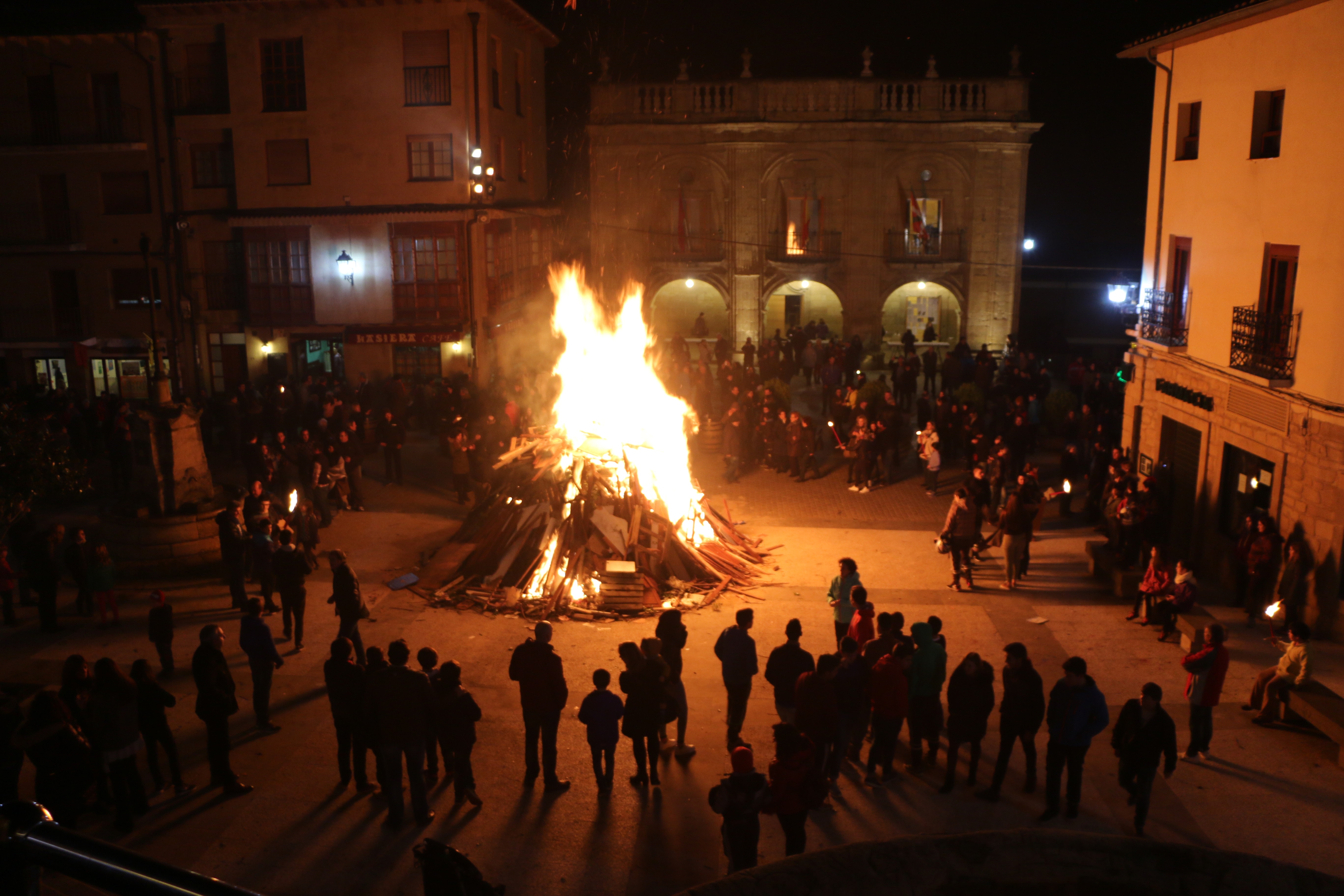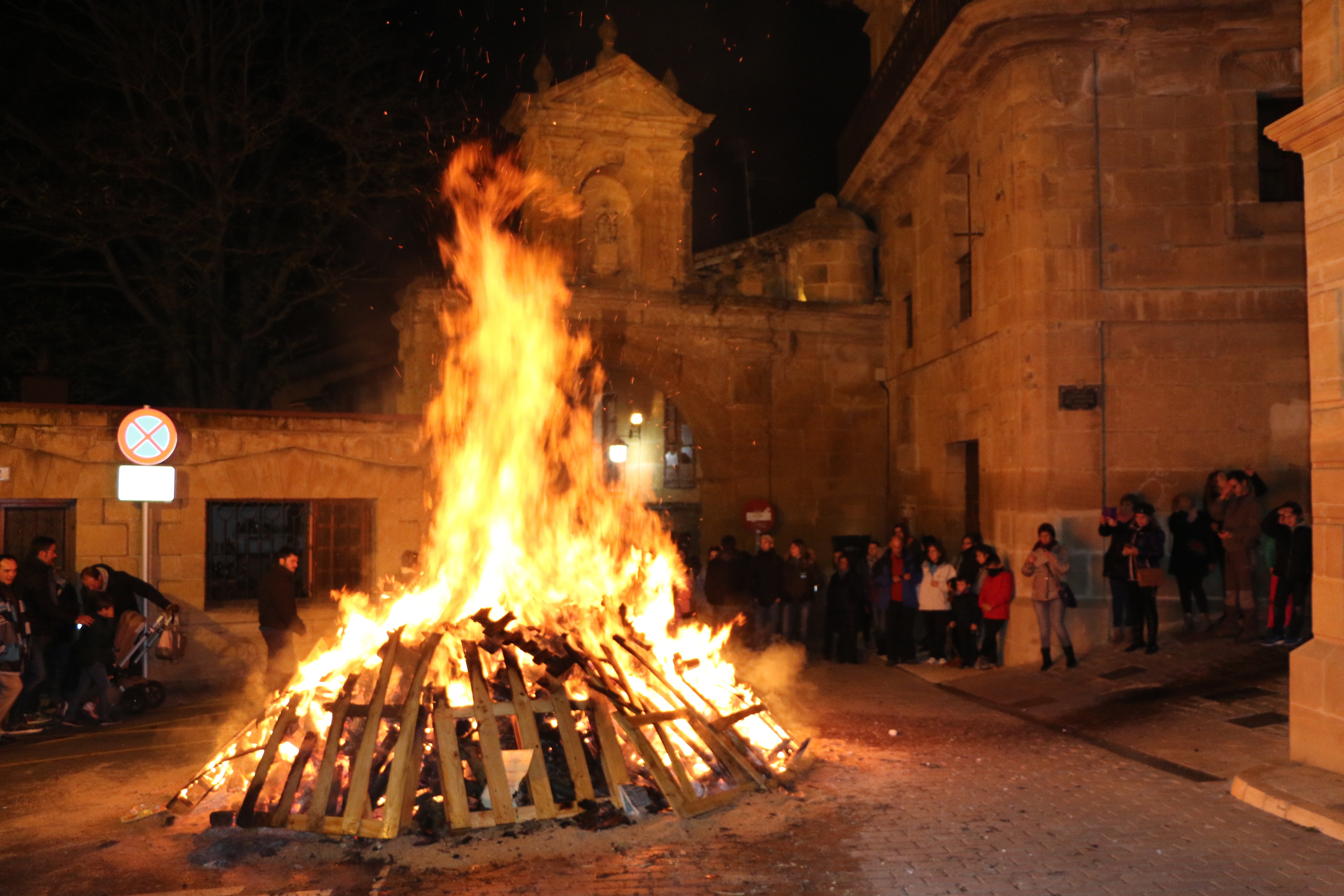
Bonfire in La Paz Square. Labastida, 2015.
The festival known as La Ronda in Labastida is celebrated on 7 December, the eve of the Feast of the Immaculate Conception, at ten in the evening. It is one of the most popular, bustling and enjoyable of all festivals in the Rioja Alavesa region.
The festive procession marches through the streets of the historic quarter. Among them are the rocket launchers, the music band, children holding burning torches, the members of the municipal corporation and the public. The passing of the parade floods every corner of the old city with joy and excitement, as a dozen luminaries are lit along the way. The round finishes with the lighting of the biggest bonfire in front of the city hall. Roasted chestnuts and zurracapote, a kind of mulled wine, are distributed to the participants.
According to the documentation in Labastida Municipal Archive, the oldest news about this feast date from the first third of the 17th century. Several hypotheses have been formulated by ethnographers on the origins of the practice: it might be a laic tradition of military character, a religious observance with a purifying purpose, an act of devotional cult to honour the Virgin, a ritual to protect animals, a form of sun worship on the occasion of the winter solstice…
The theory of a military origin provides the best arguments and is perhaps the most compelling of them all. The name of the city itself, Labastida, makes reference to a defensive walled fortification. The event is likely to derive from the marching of the soldiers around the city during the Middle Ages, making sure everything was in order and the defence of the city was ensured. Bonfires were set alight for lighting and heating in the cold winter season.

Luminary before Larrazuria Arch. Labastida, 2015.
Similar customs have been observed on this same day in other locations in the region and throughout the peninsula. Such celebrations have their roots in the local militias of a time, known as soldadescas, the purpose of which was the protection of the territories and their population.
The burning of fires constituted an expression of joy and gratefulness to the Virgin for granting them the victory in the battles and delivering them from their enemies. In the accounts of the year 1789, it is said the night guard tour was completed to the sound of the drums of war and the ringing of bells.
Fire being also a purifying element, lighting bonfires is a way to cleanse negativity and destroy the old. Fire purges evil and burns away all impurities. In point of fact, and pursuant to previous ordinances, farmers from surrounding villages, such as Fuenmayor (La Rioja), were required to make a large bonfire on the eve of the Feast of the Immaculate Conception, on pain of a fine, for the prevention of livestock diseases.
The symbolic value of fire materialises in the flaming torches carried by the young to light the way. In the nearby localities of Navaridas and Samaniego, the handfuls of aromatic shrubs and grasses, including lavender and thyme, children hold in their hands and which serve to perfume the streets of the city, are called mañas. Bonfire Night in Labastida is reminiscent of a former military duty with a sacred touch.
José Ángel Chasco – Etniker Álava – Etniker Euskalerria Groups
Translated by Jaione Bilbao – Language Department – Labayru Fundazioa
References for further information: José Ángel Chasco. La Ronda de Labastida and www.euskomedia.org.